Previously, I'd encapsulate my next experience in a few sentences. Something like, "The fish return to Issaquah Hatchery in mid-October through November. The eggs are harvested and fertilized and then put into the hatchery to grow to the 'eyed' egg stage."
Well, thanks to my cousin, Ken, a docent/volunteer at the Issaquah Salmon Hatchery, I am much more familiar with the "egg harvesting" phase of the process.
Issaquah Creek was running fast and dirty on Tuesday because of all the rain we've been having lately.
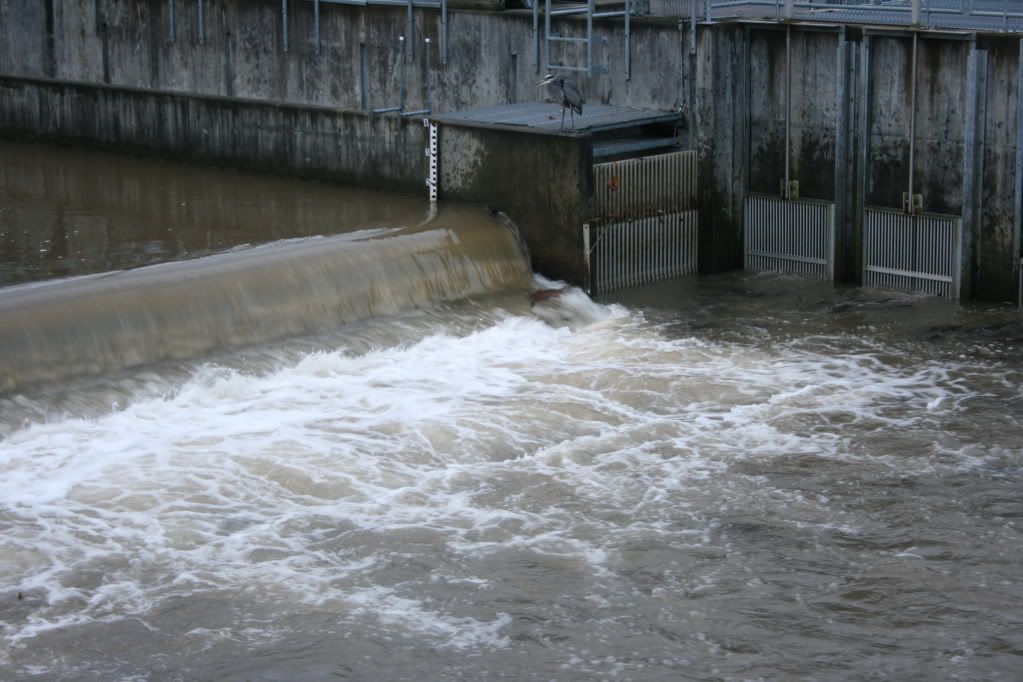
A great blue heron sat beside the spillway eying all those fish, but I guess it already knew they were much too big to take on.
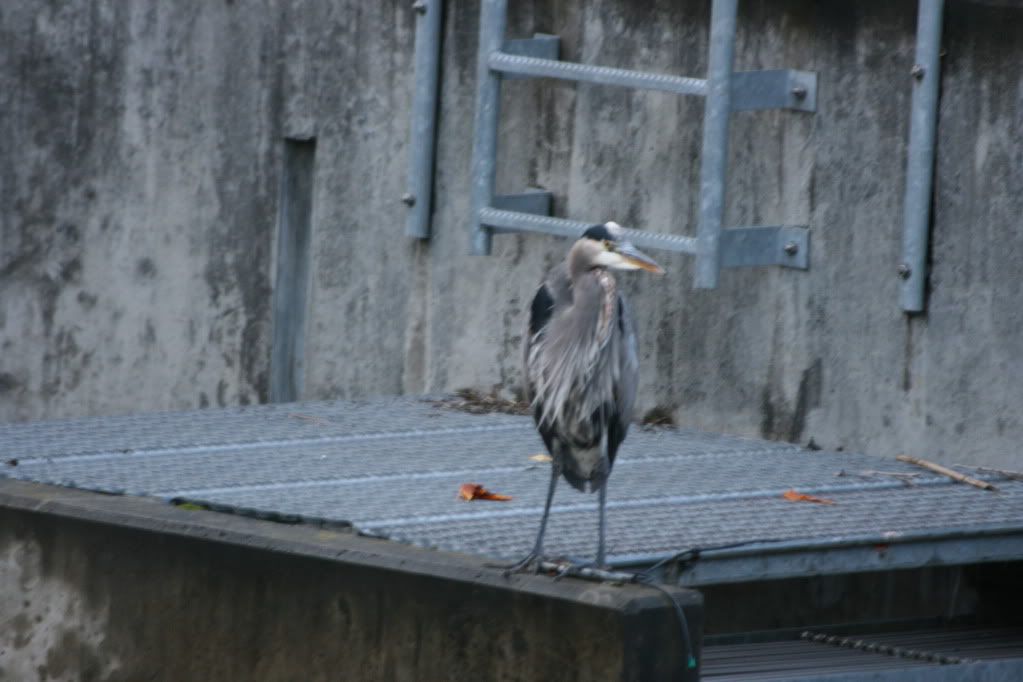
The inlet gates for the hatchery were closed (there were enough fish in the holding pens already), but that didn't keep lots of fish from lining up, wanting to get in.

On Tuesdays during the spawning season, volunteers gather at the hatchery at 8:00 a.m. to begin the process. I left home around 7, but, because I haven't been going to work for almost 3 months, I had forgotten just how grinding the morning commute can be. I had the opportunity to experience the I-405 southbound commute in all its glory on Tuesday. I made it to the hatchery on time, but just barely.
First thing to do at the hatchery is gather and eat donuts and coffee. After that everyone suited up. I had brought my own waders, but borrowed a rain slicker and gloves (the same kind of gloves vets use when working inside a large animal, heavily rubberized hands with a clear sleeve that goes up past your elbow and has an elastic closure there). In addition, you wear cotten gloves over those gloves because the coho salmon are quite slippery and you need something to get a grip on them.
First step is to get all of the fish gathered together in a smaller area within the holding pond. They do this using what they so eloquently call a "crowder". It's a motorized walkway on tracks with a big steel partition that reaches most of the way to the bottom of the holding pen. They fire up the little gas engine on the walkway and start moving it toward the business end of the pen.
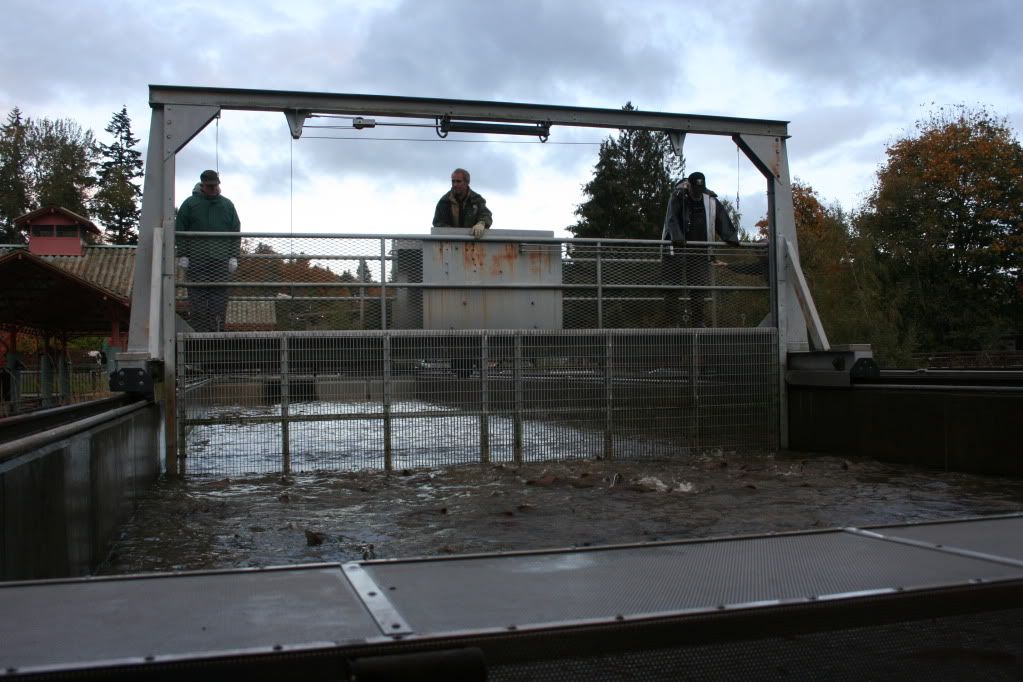
At that end there are a couple of interesting, purpose-built machines. One is called the Wallaby Whacker. It's a pneumatically-driven machine that, when you feed a fish through the opening, bangs the fish between the eyes, killing it quickly.
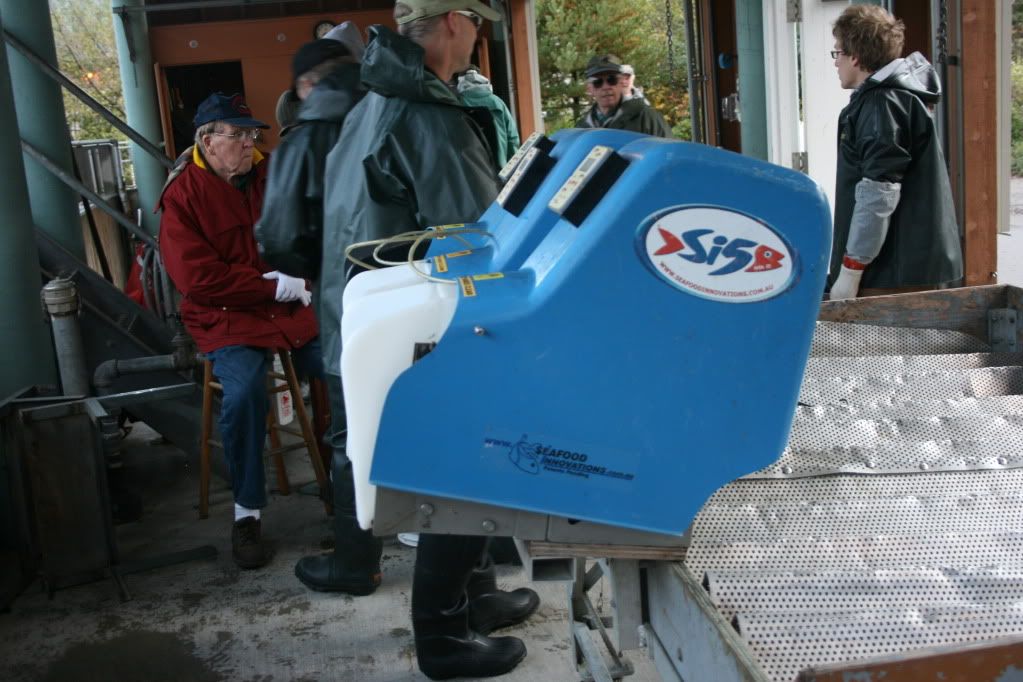
After the fish are killed, the females are slit open and their eggs harvested into a bucket (sorry, no pictures of that, I was busy in the holding pen while that was happening). The males are milked for their sperm (milt, they call it, though I'm sure Uncle Miltie would be appalled). After harvesting, the fish are fed through a machine that is a large RFID tag sensor. Tagged salmon have a small RFID tag in their nose. You feed the fish through the machine and it directs tagged salmon into one tote and untagged ones into another. That way they can get the tags from only the fish that have them and get data on the fish (how long they were in the water, when the returned etc).
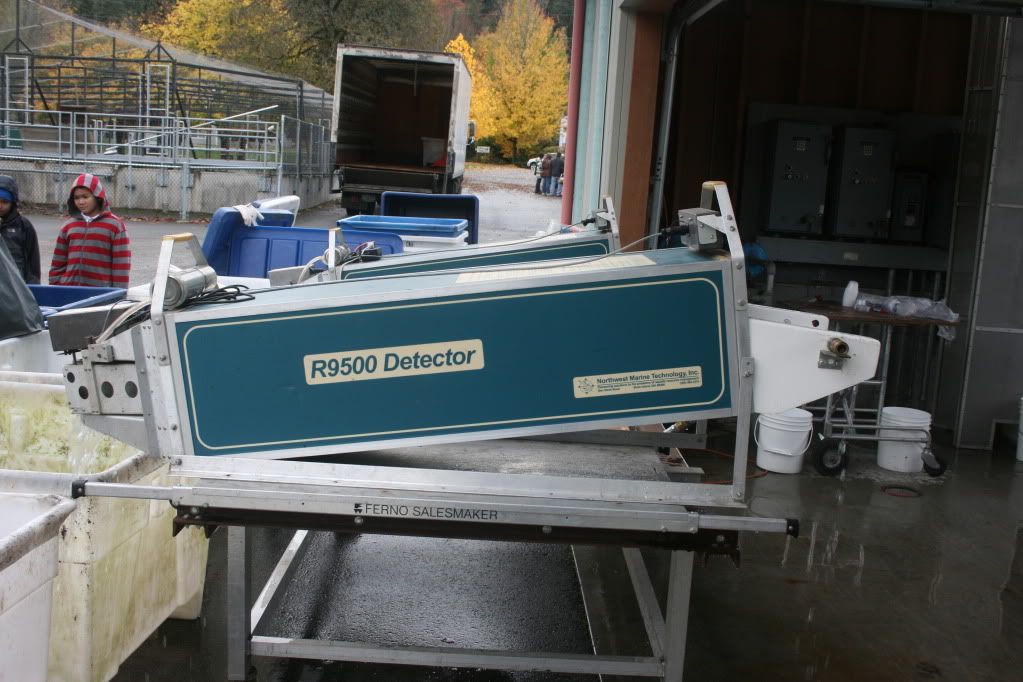
Those machines are made right here in Washington, on Shaw Island in the San Juans.
Ok, so there we all were, suited up and standing beside the holding pen. The coho were all crowded up against one end of the pen.
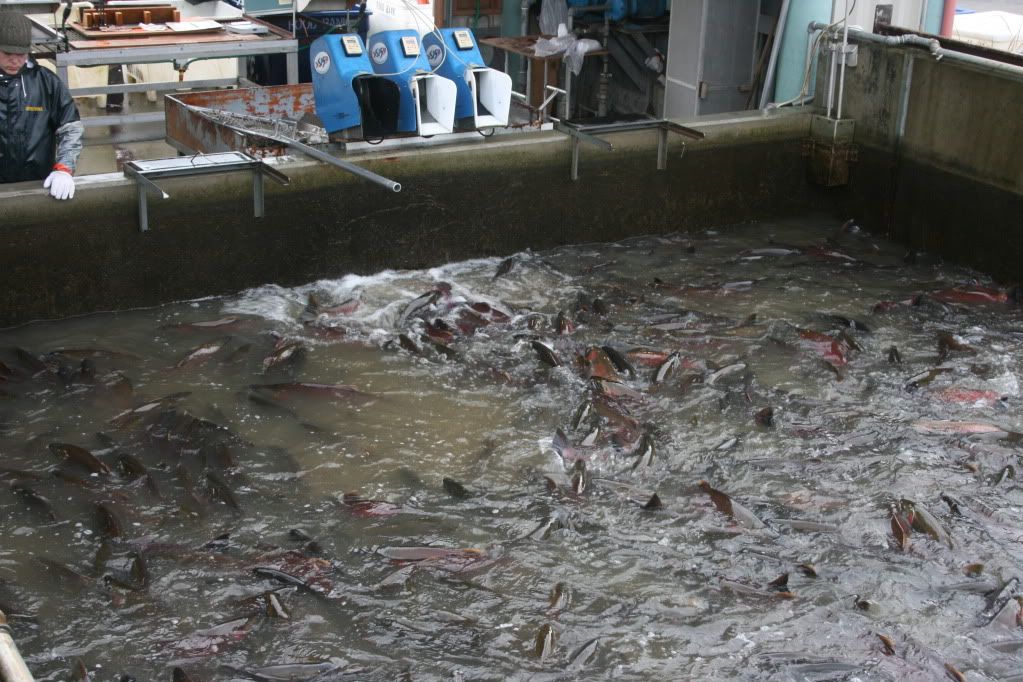
Once things got started, several of us waded into the pen with a big net and started scooping up salmon. When they harvest chinook, they don't have to use nets. The chinooks' tail is very stiff and easy to grab onto, so they don't need the net. Coho have much more flexible tails; when you grab them they just fold up and the fish slips away.
Fish are separated; hens (females) and bucks (males), wild and hatchery-raised. You can tell the difference between wild and hatchery raised because the wild ones have an adipose fin. Thats a little fin just in front of the tail on the top of the fish. Hatchery fish have that fin clipped off; it doesn't upset their ability to navigate in the water too much and makes it very easy to tell them from the wild ones. Wild hens and bucks are especially prized because they are likely to contribute greater genetic diversity than the hatchery raised fish.
If a male is big enough, or is wild, they are killed and then their sperm is milked out of them.Reproductively, males are always ready (do I hear some of you saying (with a knowing sigh) "Typical."?), but females have to be checked to be sure that their eggs are ripe.
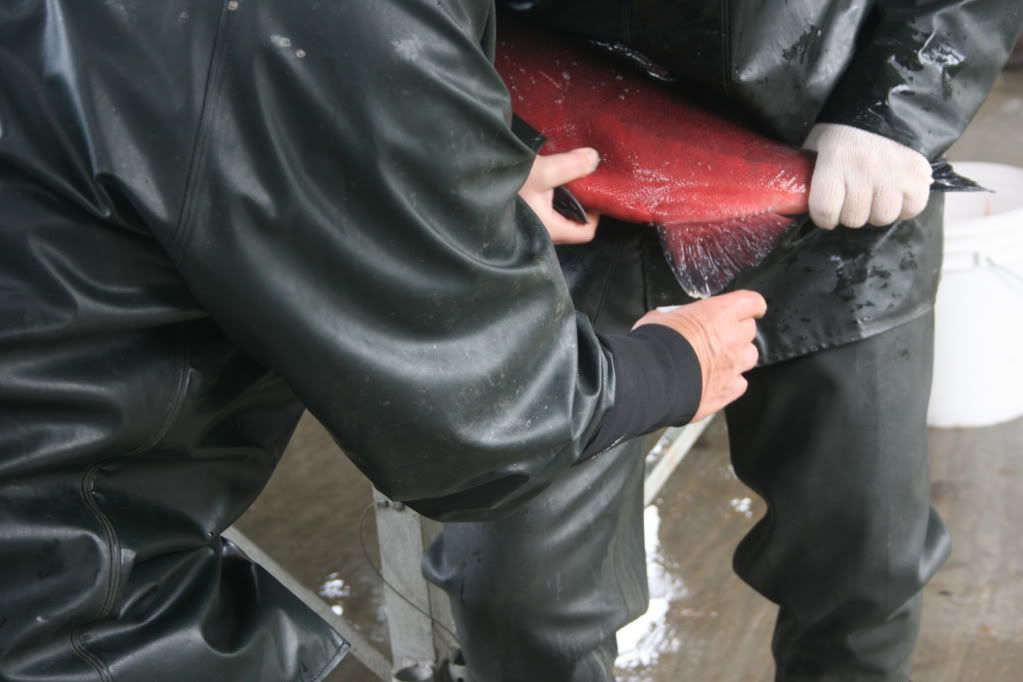
To check a female for ripeness, you hold it by the tail, head down. If they are ripe, all of the eggs in their body cavity will be loose and they will sag toward her head, creating some dimpling toward her tail by the egg slit. Those eggs are ready for her to eject them once she has built a nest, or in this case, to go into a bucket to be fertilized. If she isn't, then her body will be hard and no dimpling will show. She gets thrown back into the pond, to be checked again in a week. Eventually, she will be ready.
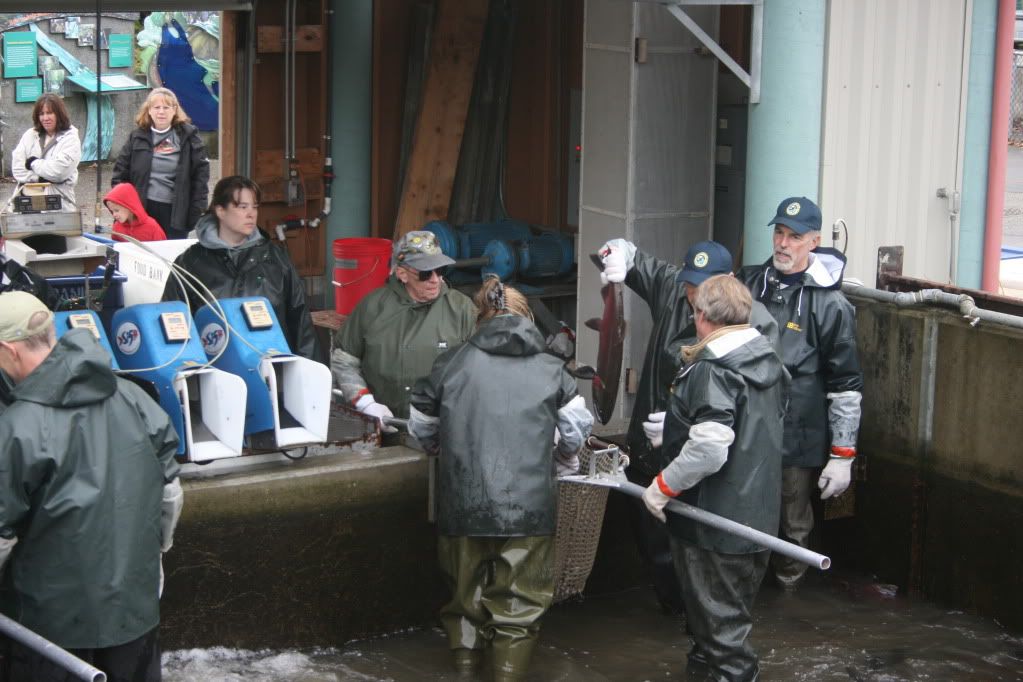
That's cousin Ken holding the fish and consulting with one of the hatchery workers.
During this whole process, I netted fish and delivered them to be sorted. The nets get pretty heavy and they have a holding platform that hangs on the wall that you can rest the net on. Once all the fish are sorted, you put the net back in the water and get another batch. I found that if you move the net along the bottom very quietly, the fish don't even realize they are in trouble (you are scooping them up) until it is much too late. That doesn't prevent them from thrashing around; they do that quite a bit. I guess that's why we were all wearing rain coats, to keep from getting covered in splashed water and fish slime.
I stayed until noon, helping to net fish, and then drove home to lunch. Thanks, Ken, for inviting me to experience yet another part of the salmon cycle.
No comments:
Post a Comment